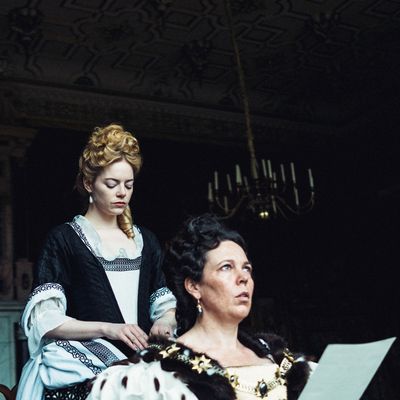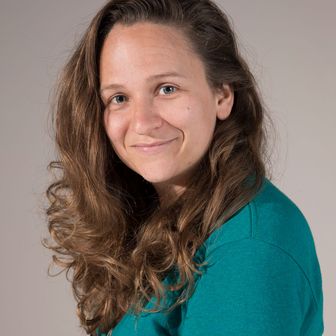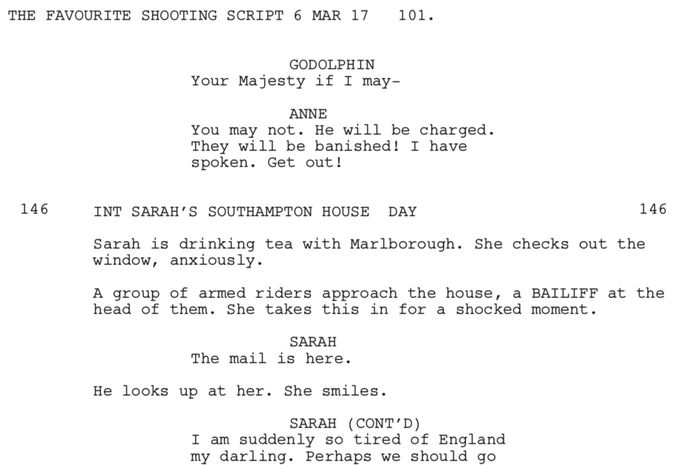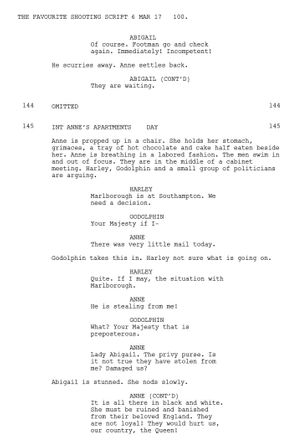
Once again, Vulture is speaking to the screenwriters behind the awards season’s most acclaimed movies about the scenes they found most difficult to crack. Before The Lobster or The Killing of a Sacred Deer, director Yorgos Lanthimos was slowly, steadily working on the script for The Favourite with screenwriters Deborah Davis and Tony McNamara. Originally titled The Balance of Power, the story follows three women fighting for love, security, and dominance over the entire British empire. The acid-dipped tragicomedy culminates with each of the three protagonists — Queen Anne (Olivia Colman), Sarah Churchill (Rachel Weisz), and her cousin Abigail (Emma Stone) — finally reaping what they’ve sown after twisting each other and the kingdom into knots. McNamara explained to Vulture how The Favourite’s enigmatic final shot was constructed, and how some adorable little bunnies helped break the scene open.
Me and Yorgos worked incredibly closely and just spent so much time together. We sort of understood without saying what we were trying to do, so there was a bit of a sensibility-match. We talked through the last third a lot — how it would work and what we were trying to achieve and where it would end up. We live in different countries, and I was in Italy on holiday when he came to Rome and we just spent three days walking around talking, mostly about the end. One of us would have an idea. We’d kick that around for a while and then we’d leave it alone. So, it was a very organic process, just conversational. We had the luxury that it wasn’t a script we’d worked on nonstop. Yorgos went away and made The Lobster, then went away and did Deer, so we had time to not do anything and then come back to it.
It’s a unique challenge is to end a multi-protagonist story. I’d certainly never written one before. I worked hard on the reversals and how they all knitted together, but you’re swapping protagonists all the time, balancing the tone and story-time for each character and making sure the audience feels all the characters have a progression. So, in a granular sense, the hardest thing as a writer is knowing your strength. Mine is character and dialogue and, knowing that, you don’t want to lean on the dialogue. You want to lean on everything you’ve done in the movie and use that in the final scene as minimally as possible.
I always wanted to end with the rubbing of the feet and Anne pulling the hair. I sort of knew that was my final image, but I didn’t 100 percent know how to get there. It was a bit talky and felt like it needed air for the actresses and to give them and Yorgos enough space to do their amazingness. So, it was just about making sure the structure of the scene was right, and that there were enough moments for them to exploit. When Yorgos and I first started together, we both agreed really quickly that it had to be a tragicomedy. They’re quite tricky to bring off, because it has to be really funny, but you also have to have laid enough emotional track in it so you can shift the tone and know you are heading to a tragic trajectory without feeling like you’ve dropped into a completely different movie. We also wanted to keep the strangeness, which was the idea of bringing back the rabbits, and that was the sort of key to how I solved the scene.
Both Anne and Abigail’s stories had to end emotionally and narratively, and it had to be swift enough that it took the audience by surprise while being satisfying. Sarah’s apartment came quite quickly, because it’s always simpler to do one protagonist’s ending, and she’s a character who really understands her world and the politics and has a self-knowledge that maybe the others don’t. So, I needed a very simple visual that she understood what was happening, even though her husband didn’t, and for the audience to see the acceptance on her part. Sarah is more at peace with her ending even though it’s not a happy one, because she’s been truer to herself throughout the movie than the others.
That is juxtaposed with the next scene of Abigail and Anne being trapped by their own decisions and by their own desires — one for safety and one for love. Anne had to realize that Abigail was not what she was pretending to be. She’d already had an inkling of it, but in that moment with the rabbits, that was the way Abigail connected with her. So when Abigail just sort of playfully squashes the rabbit, Anne could see that this person was not who she thought she was. She’d made a terrible mistake, but ultimately Anne had no one else at that point. So she still had to keep her. She wanted to hurt Abigail and show she had power over her, but at the same it had to be tragic for Anne. I wanted her to have this moment of realization about Abigail that, coupled with knowing she’d completely lost Sarah, sort of crushed her — but not crush her so she was paralyzed. I wanted it to crush her so she was rageful, in a way both at herself and at Abigail, because she’d made this world for herself and now she didn’t really have anyone else.
Similarly for Abigail, the idea was that she’s almost arrogant at the start of the scene, because she feels like she won, but it has come at a cost to who she was as a person and she’s sort of aware of that. So, there’s this is sort of self-loathing, and that was the idea manifesting with the rabbit. She’s become quite a cruel person, and those final moments for her particularly are about realizing her quest for safety has ended with her being a sort of unloved servant and a slave. The very thing she’d been trying to escape is the thing she’s now trapped herself in. She has those little soliloquies that Emma delivers so brilliantly where she knows this is costing her a lot. That was the idea of the final image, that they were locked in this terrible place together.
My natural tendency is to want funny lines in every scene, and I think because the rabbit thing is cruel and strange, that replaced the idea that I needed anything particularly funny in the final scene. I’d written it a lot of times, probably 10 or 12, and they were all functionally correct, but they were always a little bit too talky and I hadn’t found an image that would kind of get me to where I needed to go for both characters. The rabbits called back to where Anne and Abigail initially bonded, and also the idea of rubbing her legs or feet. The final scene recontextualizes elements you’d already seen in the movie in a completely sort of different way. Helping Anne had earlier been a playful thing, but it becomes something more dark at the end. The audiences sees it, and they see the terribleness of it, because it had to be the culmination of all the decisions they had all made. That was what I was trying to pull together.
It was a tough scene, but it’s also one of the things I’m happiest with and proudest of — that I pulled it all together really well and used mostly images for it. It was one of those things where you put a lot of expectation on yourself, and it took a few gos, but at the end I was like, “Oh, well. I feel happy about that!” It helps to have a great director, and you can have a lot of confidence he’s going to be amazing and shoot it in a particular way that no one else would.
Below, read the scripted versions of the scenes discussed by McNamara.







